Pictures (and more) for an Exhibition
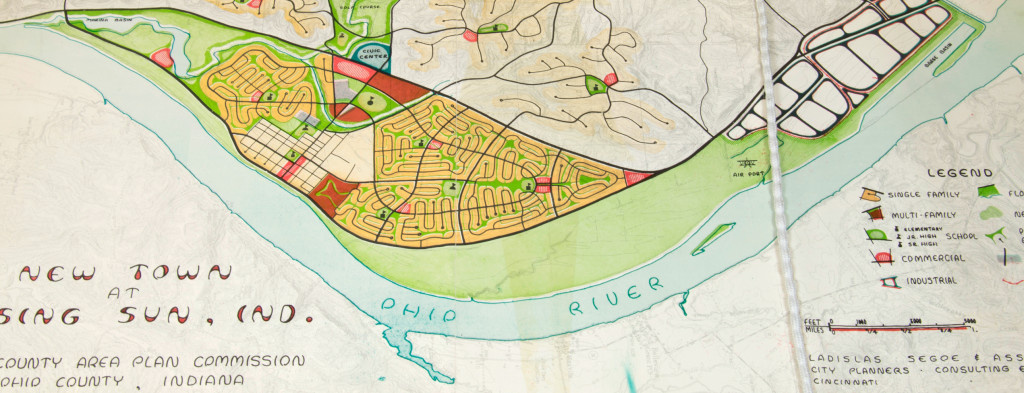
Have you ever heard of Ladislas Segoe? Unless you have a keen interest in urban planning chances are you haven’t. You’re about to though, and so are many others. He was instrumental in preparing the 1925 Official Plan of the City of Cincinnati (one of the first plans of its kind) and an exhibit about his life and work is being prepared right here at the University of Cincinnati.
Helping our institutions prepare materials for exhibits is a recent addition to our repertoire here at the Preservation Lab. When the University of Cincinnati’s Design, Art, Architecture and Planning (DAAP) and Archives and Rare Books (ARB) libraries invited us to the table for this project we jumped at the opportunity to help.
The first task? Choosing and organizing what would be exhibited. Book and Paper Conservator Ashleigh Schieszer and Preservation Librarian Holly Prochaska, with the assistance of Conservation Technician Jessica Ebert, worked with the curators to determine which objects were stable enough to travel and exhibit safely. They also discussed options such as using surrogates (copies) so key objects too sensitive to display could still be represented in the exhibit.
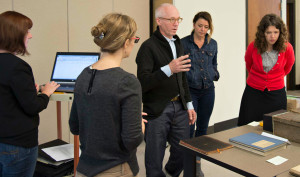
Once the objects to be used in the display were decided upon they needed to be organized according to which section of the final exhibit they would be in. Each object was photographed and assigned a number with a brief description accompanying it. The decision was made to use prefabricated boxes as much as possible and customize them with corrugated board and polyethylene foam as filler. Everything to be boxed was measured. Similar or related pieces were brought together and measured as a group. The boxes were ordered based on these measurements.
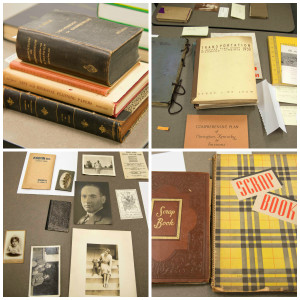
A few objects required treatment to stabilize them for exhibiting. Ashleigh and Conservation Technician Chris Voynovich worked on removing some objects from frames and creating archival mats for them. Some of the mounted images were placed in portfolios created from corrugated board and Tyvek tape.
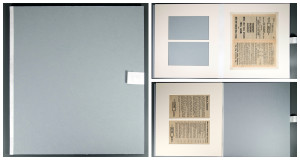
Some objects needed to be digitized so surrogates could be created. The UC Libraries Digital Collections and Repository department was able to scan many of them on their flatbed scanner. A few were too fragile or couldn’t be flattened for a good scan. Jessica put her photo documentation skills to work digitizing these.
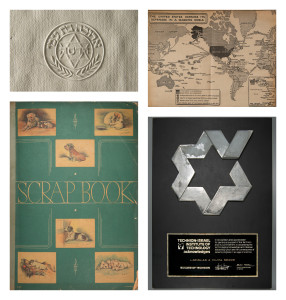
Then we rolled up our sleeves and started boxing. No, not that kind of boxing! We started matching up the ordered boxes with the items to be housed in them, then building up the interiors of the boxes and creating supports for individual items so they could be housed safely. One important fact about this exhibit is that it will be traveling. Once it’s done here at UC it is expected to be exhibited at two other locations: first at Cornell University in Ithaca, New York and subsequently at Technion-Israel Institute of Technology in Haifa, Israel. The boxes prepared here need to protect their contents throughout that process and maybe even beyond.
Many of the items going into the boxes were books (or at least booklike) and housing those was pretty straightforward. We used foam and/or board as necessary to elevate the book to be the same total depth as the box. Photo albums and scrapbooks sometimes have a wedge-like shape. These needed a wedge of corrugated board to be created to support them from below. More foam and/or board was added around the perimeter so the books would not be able to shift. In cases where multiple books were assigned to a single box the books were arranged on sheets of corrugated board for support and foam pieces placed around them to hold them in place.
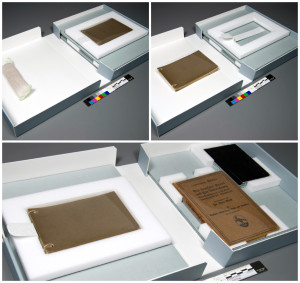
Then there were the diplomas and awards, passports, plaques, sketches, photographs, postcards, and maps. Some were placed in mylar L-sleeves, some were mounted and matted and a few of those were also placed in a corrugated board portfolio. In many cases several of these were housed in a single box, the largest on the bottom and smallest on the top, each one attached to a sheet of corrugated board with either polypropylene or easy to release folded paper and painter’s tape mounting corners.

Because of their size and weight a file box and a Rolodex required custom banker-style boxes with a drop-down side.
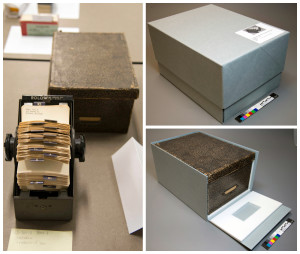
Now that you’ve seen behind the scenes come check out the exhibit! It will be showing at DAAP’s Meyers Gallery from late February to late March 2015. And the digitized collections are available in perpetuity HERE.
Written by Veronica Sorcher (PLCH) — Conservation Technician
Photography by Jessica Ebert (UCL) — Conservation Technician
